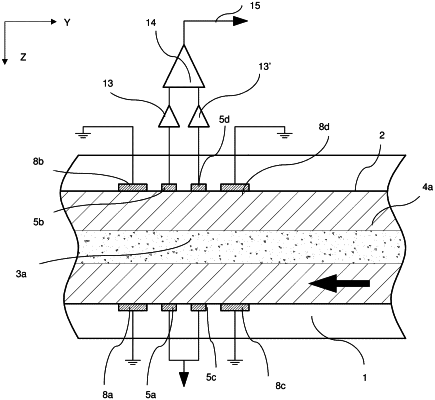|
1. A system for identification of particles/cells comprising: at least one microfluidic channel configured to sustain a flow of a sample fluid through said microfluidic channel and carrying the particles/cells along the channel in a one-by-one manner; at least a first group of detection electrodes and a second group of detection electrodes, wherein each group comprises at least one excitation electrode connected to an AC voltage/current source and at least one signal electrode connected to a detector: said first and second groups of detection electrodes generate different electric fields having two different directions channel and enable measurement of at least two electric characteristics of the individual particles/cells along two different directions defined by the directions of said electric fields: wherein each electric characteristic is measured between the signal electrode and the excitation electrode within each group of detection electrodes and where travelling particles/cells clear through the part of the microfluidic channel energized by the first group of detection electrodes before entering the part of the microfluidic channel energized by the second group of electrodes, and wherein the two groups of detection electrodes are positioned at different points along the flow direction and further comprising a means for exciting the excitation electrodes for different groups of detection electrodes at different frequencies.
|
